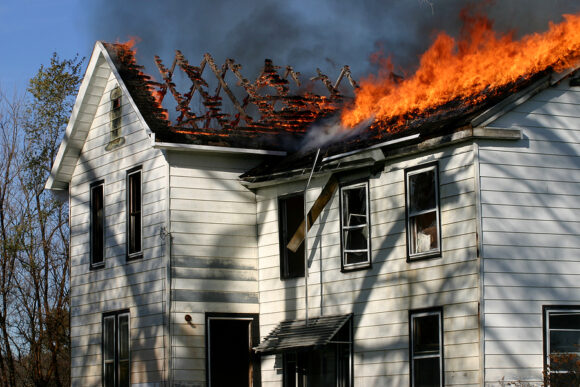In March 2019, a fire damaged Craig and Katie Shaw’s house outside the hamlet of Adams in rural southern Minnesota. Two months later—before the Shaws made repairs—a second fire burned the house to the ground.
Farm Bureau Property & Casualty Insurance Co. paid $159,808.52 for the damages caused by the first fire. But after the Shaw’s submitted a second claim for a total loss, the carrier refused to issue a second check for the full $268,800 policy limit.
The insurer argued that the Shaws were entitled to only $108,991.42—the difference between the payment it had made for the first fire and the full insured value of the home.
On Friday, however, a panel of the 8th Circuit Court of Appeals ruled that the Shaws were entitled to the full $268,800 even though they had not yet spent the money their insurer paid them after the first blaze. The court affirmed a U.S. District Court decision that found under Minnesota law and the wording of the insurance policy, Farm Bureau was required to pay the full amount of a total loss for the second fire.
The appellate panel’s opinion says “nowhere does the policy state that successive losses deplete the general policy limit on the house. As the drafter, Farm Bureau could have included such a limitation…as other insurance companies have done. Farm Bureau’s failure to attach a similar restraint to the general policy limit indicates that no such restraint exists.”
Court documents contain only cursory information about the two fires. According to the Shaw’s civil complaint against Farm Bureau, the March 9, 2019 blaze opened a large hole in an exterior wall. The Shaws hired a roofing crew to secure the home, but had not started other repairs.
Firefighters were called out again to the Shaws’ home on May 19, 2019. They doused a fire burning near a liquefied petroleum gas tank and then noticed that the Shaws’ house had been destroyed by the blaze.
After the Shaws submitted their second claim, Farm Bureau argued that it was not required to pay more than the full value of the home for separate events that occurred within the same policy period. But the insurer did not cite any Minnesota statute that allowed it to pay anything less than the insured value of the home, the Shaws’ civil complaint says.
Both parties filed motions for summary judgment at the US District Court in Minnesota. District Court Judge Nancy E. Brasel granted the Shaws’ petition.
The judge said in her ruling that no court construing Minnesota law had ever before been asked to decide whether an insurer can limit payments for successive losses occurring during the same policy period. But she noted that the Farm Bureau policy states that coverage applies to each “accident, loss and occurrence” and does not limit coverage for successive occurrences. She said the language is not ambiguous, and even if it was she would be required to resolve the ambiguity in favor of the insured.
Farm Bureau argued that the Shaws could not have suffered a total loss because the house was already damaged at the time of the second fire. The two fires together had caused the total loss, the insurer contended.
Brasel, however, said if the value of the house had been reduced by the first fire, Farm Bureau could have changed the policy terms to reduce the amount of coverage. It chose not to.
The appellate panel noted that the Farm Bureau policy did not write a provision into the policy establishing a duty for the insured to make repairs after a payment for damages is made.
“Instead, the Shaws have a responsibility ‘to make any repairs that are necessary to protect the property from further damage,”’ the opinion says. “Other repairs that would restore the house to its original condition are not required.”
The 8th Circuit panel affirmed the district court’s ruling.
Was this article valuable?
Here are more articles you may enjoy.


 Rare Weather Warning Issued as Strong Gusts Fuel Colorado Wildfire Threats
Rare Weather Warning Issued as Strong Gusts Fuel Colorado Wildfire Threats  Poorer Americans Dropped Federal Flood Insurance When Rates Rose
Poorer Americans Dropped Federal Flood Insurance When Rates Rose  Instacart to Pay $60 Million in FTC Consumer Protection Case
Instacart to Pay $60 Million in FTC Consumer Protection Case  Jump Trading Faces $4 Billion Terraform Administrator Suit
Jump Trading Faces $4 Billion Terraform Administrator Suit 